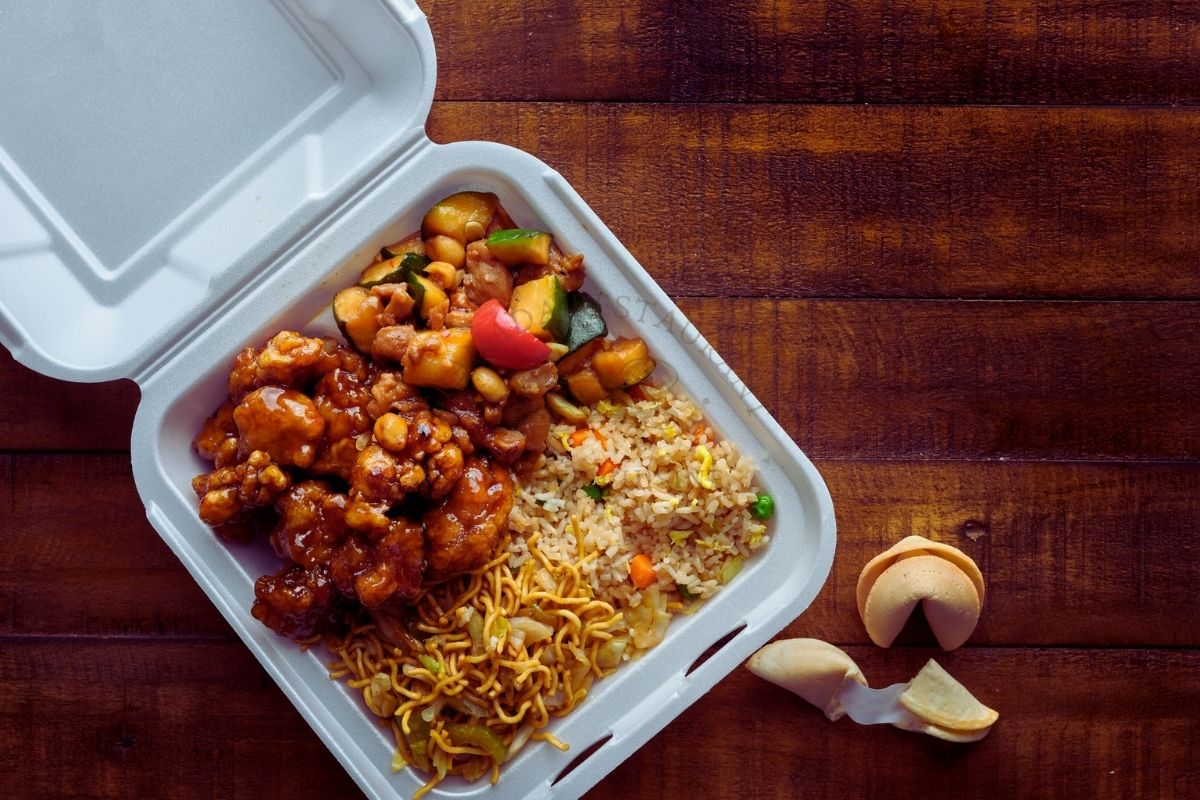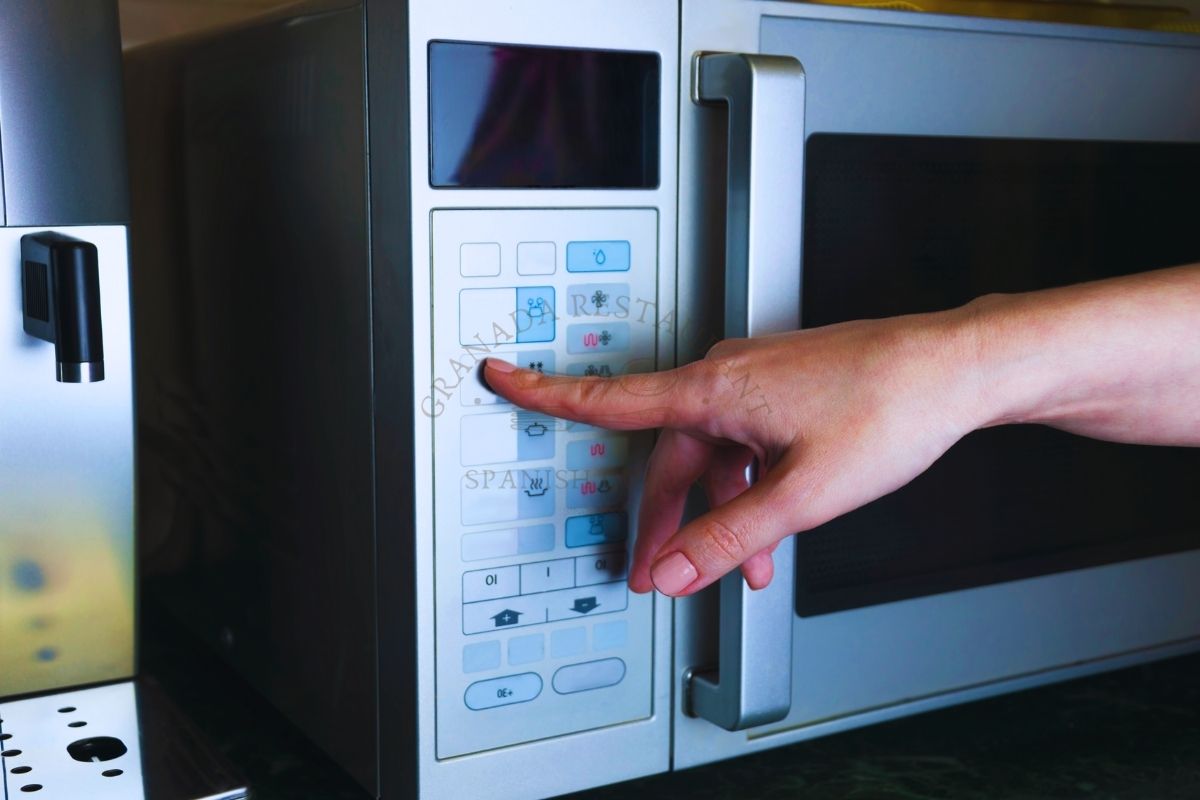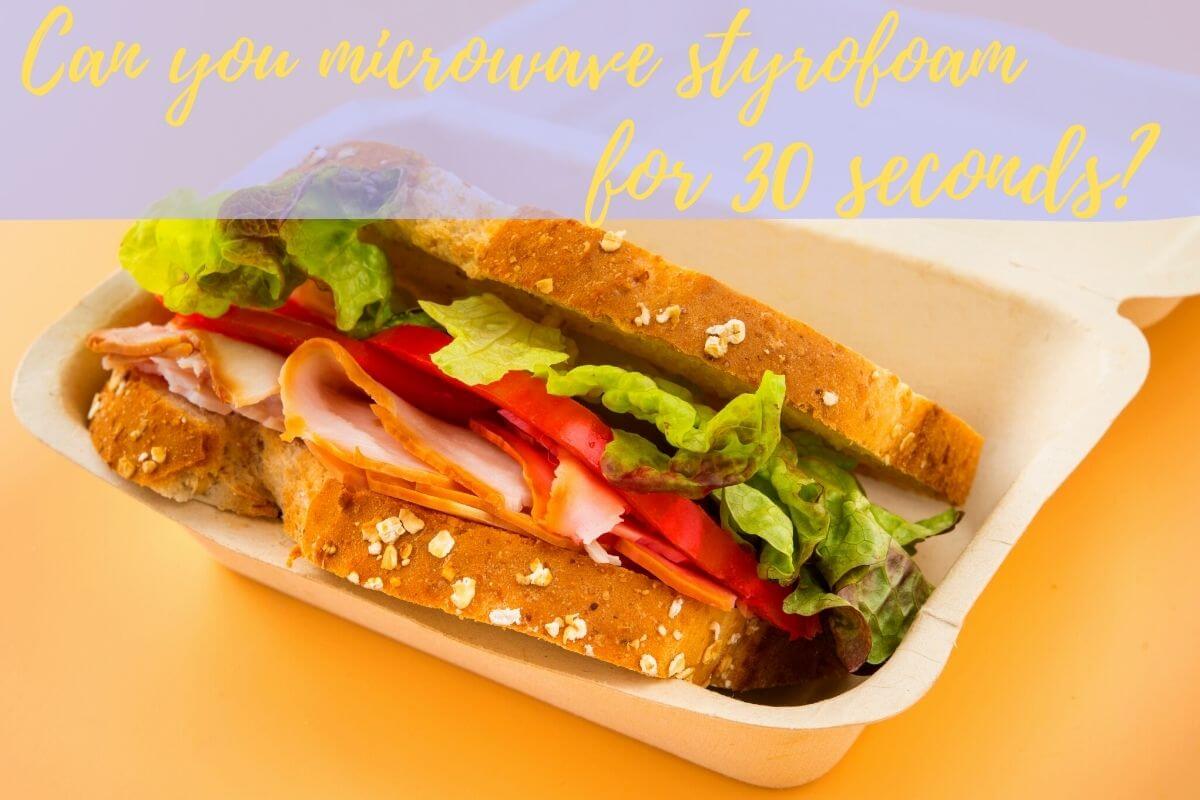Are you a busy housewife looking for convenient and efficient ways to heat your food? Are you considering using the microwave for Styrofoam containers but unsure whether it is safe?
With microwave cooking becoming more popular, we’re here to address this question and provide all the information you need about microwaving styrofoam. We’ll review its safety, tips on achieving optimal results when microwaving styrofoam, and things that are NOT recommended. Let’s dive in!
Can you microwave styrofoam for 30 seconds?
Even 30 seconds of microwaving can be hazardous to your health. When the temperature of the material reaches 210°F or higher, Styrofoam begins breaking down and releases toxins into food that could cause harm if ingested.
What Are Styrofoam and Its Common Uses?
Styrofoam is an artificial foam material that can be used for various purposes, including insulation and packaging. Its most common use is in food containers, where it can be used to keep food warm or cold while transporting or serving.
Styrofoam (polystyrene) containers keep food and beverages warm quite well and are inexpensive to manufacture. This explains why so many eateries use them for takeout. Single-use polystyrene containers raise significant environmental and potential health concerns, though. Numerous nations, towns, and governments have recently outlawed polystyrene usage.
As Styrofoam containers have gained popularity, many wonder about their safety when putting them in a microwave.

Is It Safe to Microwave Styrofoam?
You may have seen Styrofoam at the coffee shop or used it to pack your takeout. While this material is safe for items not too hot, microwaving it can cause a toxic chemical called styrene and other chemicals to leach into food as temperatures increase beyond normal levels.
Even products labeled “microwave-safe” still release some potentially harmful substances. Therefore, I avoid using any polystyrene products in microwave ovens altogether. It’s better to be safe than sorry.
What Happens when You Put Styrofoam Containers in Microwaves?
I investigated what happens when you put your meal into a Styrofoam container with two types of material available: traditional and microwave-safe varieties.
Unfortunately for regular polystyrene form users, studies have shown that heating this type can release toxic compounds like benzene or styrene, which are linked with reproductive issues and cancer risks. As a result, keep all foods away from any non-microwave-approved Styrofoam!
Try using the newer version of Styrofoam for your coffee cups, cup noodle containers, or plates. These materials are much safer than traditional products, but their thermal-resistant properties make them ideal for reheating food and drinks. Just remember not to exceed 30 seconds to avoid any potential risks!
With Styrofoam being a plastic foam, it’s of the utmost importance to exercise caution when reheating in the microwave, even for several seconds.
Overheated Styrofoam can release hazardous substances that could have severe consequences for our health, including digestive issues, vision problems, and possibly cancer-related symptoms.
To ensure your safety, let us provide you with some simple tips before going ahead with any heating process involving styrofoam materials:
- Make sure the foil lid is removed from the container before microwaving.
- Keep an eye on it. Do not leave it unattended for too long.
- Place it on a microwave-safe plate or dish.
- Do not exceed 30 seconds of heating time.
- Keep the container away from the sides and back wall of the microwave.
Can You Microwave Styrofoam for 30 Seconds?

While microwaving Styrofoam should be avoided as much as possible for safety reasons, there are certain situations when this may become necessary.
Fortunately, with the right containers designed to minimize toxin release that has been tested and approved by FDA standards, it is safe to heat food and beverage items in them if they carry a microwave-safe label. Following these precautions, you can use your microwave oven confidently, even using Styrofoam products with the microwave-safe label.
|Read: Fryer To Plate: The Oil Makes Popeyes Chicken So Addictive
As a precaution, I would advise against microwaving any Styrofoam container for an extended period of time. Heating this type of plastic can sometimes cause it to leach toxins into the food or drinks that are in contact with it – something no one wants! Only use short bursts at a medium power level to stay safe and stick to microwave-safe containers, as experts recommend.
Certain things can’t be microwaved with Styrofoam, such as food containing liquids, metal objects, or eggs in shells. Doing so can cause a fire or other accidents. Therefore, it is best to avoid microwaving these items with Styrofoam containers.
Risks Associated with Microwaving Styrofoam
Microwaving Styrofoam poses several threats, including chemical leaching, fire hazards, and health risks.
- Chemical leaching can occur when microwaving Styrofoam. Chemicals can leach into the food or beverage that is being heated and can cause health risks if consumed.
- Fire hazards can also be a risk associated with microwaving Styrofoam. When heated, the material can become flammable and can start a fire in the microwave oven.
- Health risks can be caused by certain chemicals in Styrofoam that can leach into food and beverages. Chemicals such as styrene, benzene, and ethylene can cause digestive, eye, reproductive, and other health concerns.
Alternatives to Microwaving Styrofoam
Of its convenience, many people want to reheat their food in styrofoam containers. However, with all the risks explained above, it’s highly recommended to microwave your meals in:
#1 Glass containers
Glass can withstand high temperatures and can be reheated safely in microwaves. Tempered glass is a type of glass that is heat-treated to make it more durable and resistant to thermal shock.
#2 Ceramic containers

Ceramics can keep food warm for longer and can also be used to reheat food without worries.
Ceramics is a type of clay that has been fired at high temperatures, making it strong and durable. This high-heat firing process also gives ceramic its heat-resistant properties, making it safe for use in the microwave. Additionally, ceramic is a non-reactive material, which means it does not react with food or release harmful substances when exposed to high temperatures.
#3 Silicone containers
They are microwave safe because they are made of a heat-resistant material that can withstand high temperatures without melting or releasing toxic chemicals. Silicone has a high melting point and is flexible, which allows it to withstand the rapid temperature changes that occur during microwave cooking.
Additionally, silicone does not react with food or release harmful substances, making it a safe option for storing and reheating food in the microwave.
Frequently Asked Questions
1. How hot is too hot for Styrofoam?
The maximum recommended temperature for Styrofoam is 120°F or 49°C. When heated to temperatures exceeding this, the material can become flammable and start a fire in the microwave oven.
2. Are microwave safe Styrofoam containers really safe?
Yes, microwave-safe styrofoam containers can be used safely in the microwave if you follow the recommended tips for microwaving.
Read More: Temperature Sweet Spot: Perfectly Cooked Vegetables Right On
However, it is still important to note some risks associated with microwaving Styrofoam, such as chemical leaching and fire hazards. Therefore, it is best to opt for alternative materials such as glass, ceramic, or silicone when reheating food.
3. Can I microwave Styrofoam for 5 seconds?
Yes, you can microwave styrofoam for up to 5 seconds. Of course, this is only capable of microwave-safe styrofoam.
However, it is essential to note that the longer you microwave Styrofoam, the higher the risk of chemical leaching and fire hazard can become. Therefore, it is best to limit microwaving Styrofoam only to concise periods of time.
Additionally, it is always advised to use alternative materials when reheating food.
4. Can Styrofoam containers be recycled?
No, Styrofoam containers cannot be recycled through most conventional recycling programs. Styrofoam, also known as polystyrene, is a type of plastic that is not easily recyclable because it is lightweight and has a low melting point. As a result, it can contaminate other recyclable materials and damage recycling equipment.
Check out this video: advice from experts.
Some communities may have specialized recycling programs for Styrofoam, so it’s always best to check with local recycling facilities to see if they accept this material. The best way to reduce the impact of Styrofoam on the environment is to reduce its use and dispose of it properly, such as by taking it to a specialized recycling facility or a landfill.
It is not advisable to microwave Styrofoam containers due to the risks associated with exposure to heat. While Styrofoam is a convenient material for many purposes, safer alternatives are available for microwave use. If you must use a Styrofoam container in the microwave, take precautions and monitor the container carefully to avoid any potential hazards.
Further Reading:

I am Benjamin Nunez, and I love Spanish food, Italian food, and seafood. I have worked in kitchens all my life. I started as a dishwasher when I was just a teenager, and worked my way up to being a head chef.
I specialize in Spanish cuisine, but I can make any kind of Italian or seafood dish you want. My kitchen is always open! Website: https://granadarestaurant.com/

